The earliest record of ‘taking tea’ was not due to the purely social needs of women, but was due to changes in the male domain.
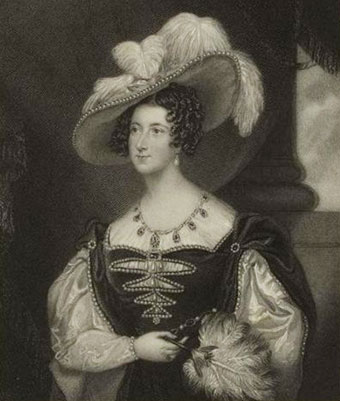
Because of late evening meals, lunch became larger spreads, often accompanied by extended business meetings. By 1859 politics governed the environment, topics such as Marx and the European Royalty were popular with influential London men. These lunch parties were usually hosted by up and coming young men striving to impress the staid and conservative business sector, but eventually that sector too, embraced the new trend.
All of this resulted in a very long break between meals for the women waiting for their men to return home for the evening meal. The 7th Duchess of Bedford has been credited as the first to adopt afternoon tea, which became a fashionable form of entertaining by 1865. Lady Fredericks mentions in her diaries in 1866, that ladies met and discussed ‘tea business’, the female equivalent of men discussing politics, thereby giving women a social outlet to discuss topics such as politics etc which were deemed unsuitable for women to discuss in mixed company.
Social behaviour
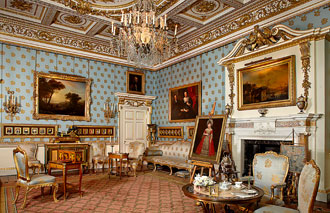
As taking of tea became fashionable, the ritual became both expected behaviour and correct behaviour.
Tea was also seen as a symbol of a right of passage. ‘Finally being admitted to tea and coffee drinking, then, is a minor initiation rite: you are old enough to take it and by that time you are also likely to know how to “behave”. Eating when we are hungry is a relief, eating with others is also fun. The event and the pleasure of company is important to an individual’s wellbeing, hence, the phrase “tea and sympathy”.
Taking tea developed public and private realms of interest; festive dressing is a response to an eating event. Wearing clothes is a social act. Styles bow to social agreement, they adorn their wearers and enhance their appearance, thereby displaying a subtle language of who you are and who you want to be.
Manners
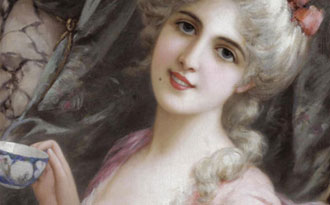
“Never” says Andreanis’ French guide to etiquette (1988) “leave your coffee spoon in your cup when you lift it to your lips”. It was once perfectly correct to stand your teaspoon upright in your cup to show you did not want any more tea, just as it was once correct to pour a hot beverage into a saucer to help it lose heat. The saucers though, were deep more like a small bowl. In the early 18th century this was not an unusual practice, as the earliest tea cups were much like Chinese teacups and frequently did not have handles. All the tea drunk before the mid 1800’s and most of 1850 was China tea.
Politics, food and national identity
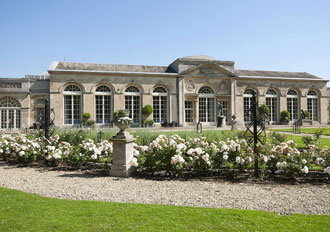
During the 17 and 18th century, rising nationalism was reflected in food tastes. As American identity increased, a growing rejection of the trappings of Britain also began to rise. Manufactured goods imported from Britain were readily available to many people for the first time, and resulted in a ‘standardisation of taste’. And as consumer goods became politicised in the decades leading up to the American Revolution, they took on a new symbolic function. Food took on a new meaning, and in particular tea, which resulted in one of the best-known Revolutionary stories – the Boston Tea Party.
Whilst the Tea Act united the colonists as they had never been before, the political ideology was secondary to the economic and social impact on the general public. Tea was perhaps the major article in every colonial household, and in eighteenth-century consumer society, it was a beverage which appeared on the tables of the wealthiest merchants and the poorest labourers. For Americans, therefore, it was not difficult to translate their perceptions of liberty and rights from the viewpoint of the everyday kitchen. The ceremonial destruction of tea subsequently strengthened the bonds of identity and political solidarity and for many women, this was the earliest introduction into a political sphere. Many joined purely out of a sense of limits reached, and an unwillingness to altogether abandon traditional foods.
Who had access to tea?

In the 18th century, tea had heavy import duties, consumption was limited to the higher classes. In the 19th century, aided by a reduction of duty, tea use began to rise, but was still an expensive item. Among the higher classes, tea was the only item customarily made in the dining room or drawing room by the mistress of the house. The tea caddy was locked and the key was in the possession of the lady of the house. Tea was a distinct trapping of wealth and with that, came all the accoutrements and accessories. Tea urns were expensive and were often displayed on specially designed tables (tea poy) made of rosewood.
While tea was imported from China, it was considerably expensive. The possibility of growing tea in India had been considered since the 1770’s but was not seriously pursued until the East India’ monopoly expired. This gave the major importers a sense of urgency to find another source. India tea had arrived in limited quantities as early as 1839 and in the 1850’s Indian tea was still very much a connoisseur’s item. As the tea harvests in India improved, the availability increased and eventually the price dropped sufficiently to make tea affordable for all.
The manner in which tea was drank probably differed between the classes. The poor usually had to drink it black or with watered down milk and brown sugar whereas it was said that the correct way to drink tea was “with cream instead of milk, and very small lumps of sugar.”
Tea History Timeline
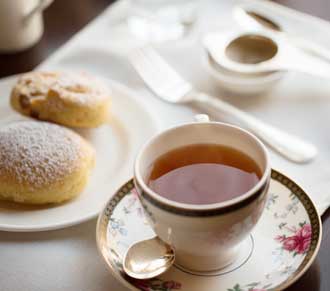
1680
Surging demand for cocoa, tea and coffee in England brings an increased demand for slaves to produce more sugar in British colonies.
1752
England’s Royal Worcester Porcelain Co. has its beginnings in a crockery firm founded June 4 by Dr John Wall and potter William Davis to take over Benjamin Lund’s Bristol factory, started 3 years ago. Dr Wall will perfect soapstone porcelain, basing his work on the expertise of his workmen. His company’s blue china teapots, cups and saucers, with an underglaze Chinoiserie design are made from a past containing soapstone (steatite) and by the 1760’s the designs will be modelled on those of Meisen and Sevres, as well as those from China.
1768
The East India Company imports tea into Britain at the rate of 10 million pounds per year.
1773
The Tea Act passed by Parliament May 10 lightens duties on tea imported into Britain to give relief to the East India Company, which has 7 years supply in warehouses on the Thames and is being strained by storage charges. But the Act permits tea to be shipped at full duty of 3 pence per pound to the American colonies and to be sold directly to retailers, elimination colonial middlemen and undercutting their prices. Boston tea party, to demonstrate against new English tea orders.Tea is left to rot on the docks at Charleston, New York and Philadelphia sends tea laden ships back to England.
1837
Tetley Tea is introduced at Huddersfield England, where local merchants Joseph and Edward Tetley open a shop under the name Tetley Brothers – Dealers in Tea. The two had peddled their tea from a packhorse across the Yorkshire moors.
1840
Afternoon tea is introduced by Anna, wife of the seventh duke of Bedford. Breakfasts are large, lunches sketchy, and dinner is not served until 8 o’clock, so people are hungry by late afternoon; the tea interval will become a lasting British tradition, but the English still drink more coffee than tea at this time.
1823
China’s monopoly in the tea trade begins to fade as an indigenous tea bush is found growing in northern India’s Upper Assam. Acting for the British government, Charles Bruce smuggles knowledgeable coolies out of China and puts them to work transplanting young tea bushes into nursery beds to begin tea plantations that will be more efficiently organised than Chinese plantations.
1833
The East India Company loses its prized monopoly in the China trade (most of it in tea) by an act of the British prime minister Charles Grey. The name Earl Grey will be used for a blend of Indian and Ceylonese tea flavoured with oil of bergamot (a Chinese mandarin gave him the recipe) and as a generic name for scented teas such as jasmine.
1839
95 chests of Assam tea arrive at London and are sold at auction. As in China, harvesters in India and Ceylon pick only the four youngest, tiniest, tenderest leaves at the ends of branches, called pe-ko, or silver tip, in Chinese, but unlike green China tea, the leaves from India are fermented, or cured, and the original silver-tip or pekoe leaf turns brown, giving rise to the term “orange pekoe” which indicates the size of the leaf (the next larger size being pekoe and the largest souchong; the terms are used only for the black teas of the East Indies; West India teas from Darjeeling, brown in the foothills of the Himalayas, have woodier fruitier aftertastes. As the new black tea is less astringent than green tea, it begins to gain popularity (Duchess of Bedford).
1866
The Great Tea Race from Foochow to London pits 11 clipper ships that race to minimize spoilage of the China tea in the hot holds, but the voyage still takes close to 3 months. More than 90 per cent of Britain’s tea still comes from China.
1898
Annual British tea consumption averaged 10 pounds per capita, up from 2 pounds in 1797. Black tea from India and Ceylon has long since gained dominance over Chinese green teas, but many connoisseurs still prefer China’s green teas, especially Gunpowder and Hysson and Chinese black teas, notably Keemun or Congou from North China, also called English Breakfast tea.
